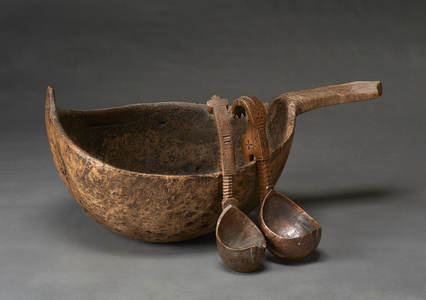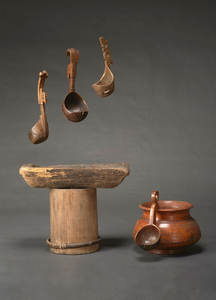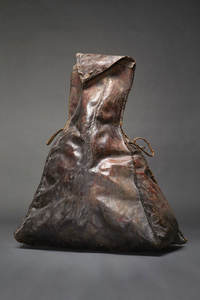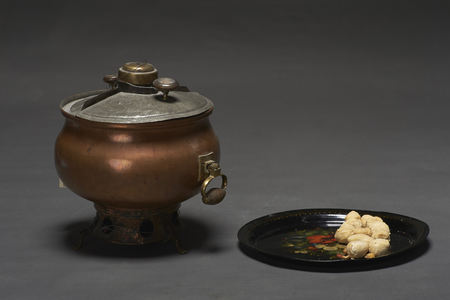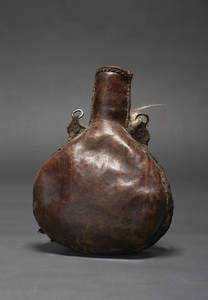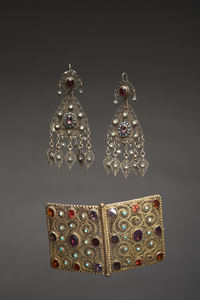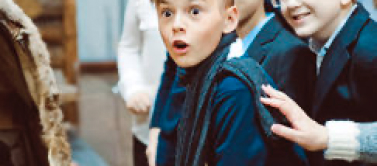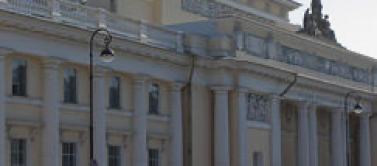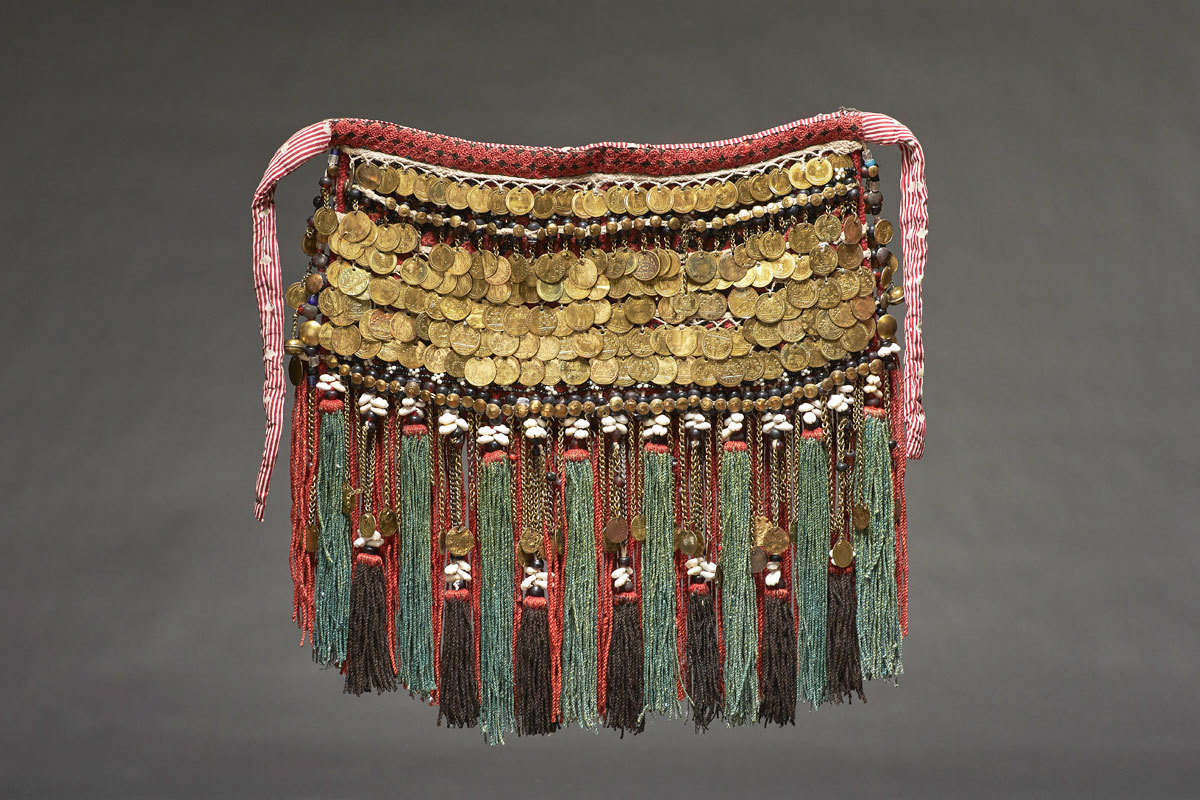
Why were the residents of Perm Land tagged as “Permians the salted ears”? Which of the Finno-Ugric peoples is considered the most red-haired one on planet Earth? Why did the Moksha women wear the heavy decoration poolagai on their hips? Why were the Mari women called “blackfoot dames?” The Tatars are the region’s largest Turkic people. What crafts did they know? What did local merchants trade in? Why is the kalyapush skullcap the Tatar ethnic brand? What is shamail? When and how was the feast sabantui celebrated? Two rooms of the exposition are dedicated to the peoples of Volga and Ural Lands; the first one presents Finno-Ugric Komi, Udmurts, Mordvins, and Mari, and the second, the Turkic-speaking Tatars.
The exposition “Tatars of Volga Land and Ural Land. 19th – early 20th century” is a section of the theme complex “Peopled of Volga Land and Ural Land. 19th – early 20th century.” The exposition’s aim is to demonstrate features of the multifaceted Tatar culture, its uniqueness, separating common and original traits of various groups within one ethnicity.
Presented in the exposition space are museum objects showing the features of cult attributes, products of traditional arts and crafts, clothing sets, utensils, and work tools of various ethnic, territorial, and ethnoconfessional Tatar groups of the Volga-Ural region of the Russian Empire. By their time of occurrence, most exhibits are dated 2nd half of the 19th or early 20th century.
The introductory part of the exposition is dedicated to the humanitarian mission of Kazan University as the center of studies and education of all the peoples in the region. This section is illustrated by academic papers of the university’s faculty and members of the Society of Archeology, History, and Ethnography. The editions of the translation committee of St. Gurias Brotherhood are a good example of the role of that society that combined two lines of activity, Christianization and education. Dozens of schools were opened where children of indigenous peoples learned not only the Scripture but also to read and write in their native and Russian language, arithmetic, and other subjects. The conventional scene illustrating this theme presents a rural school.
The introduction also describes the features of Islam, which is the dominating religion and the basis of the outlook for most Tatars in the region, determining the uniform norms of behavior for ritual and everyday life of various ethnic groups. In the exposition space, each of the theme units demonstrating the culture of Moslem Tatars includes typical religious attributes, for instance shamails, or wall panels with sentences of the Quran made in different styles.
Kazan was the center of spiritual life. Religious literature was published there, and shamails were printed with images of holy places, sentences from the Quran etc. to be distributed far beyond the region’s borders. The miniature case with the Quran, and amulets with surahs of the Quran are not only sacred attributes but also works of art of Tatar artisans.
The cultural identity of the Tatars of Volga Land and Ural Land was determined by their urban or rural lifestyle, which was reflected in the structure of the exposition.
The first section is dedicated to the traditional culture of urban Tatars who lived in Kazan, Kostroma, Kasimov and other cities. The theme units “Kazan tradesman’s shop,” “Ichigo and kalapush workshop,” and “Jewelry making” describe the trade and artisan specifics of the city’s population.
Reconstructed in this section of the exposition is the interior of a room in an urban house. The atmospheric scene is an illustration to the tradition of guest hosting in the female part of the house. The costume complexes display the features of women’s festive garments of the second half of the 19th century.
The scene demonstrating the celebration of Sabantui is the symbolic border between the cultures of the urban and rural population. Today, too, this feast unites all those attending it, regardless of their ethnicity and confession.
The section dedicated to occupations of Tatars living in the countryside presents work implements, mainly in cattle raising.
The same section reproduces the interior of the female part of a rural house of Mishar Tatars. A stage of the infant naming rite is shown.
Special ethno-confessional groups of rural Tatars in the late 19th and early 20th century were the Orthodox Kryashens and Nagaibaks. The latter were granted the status of the Russian Federation’s native minority in 2000. The ethnocultural features of Tatars professing the Orthodox faith are illustrated by the scene “Orthodox feast: Cross Procession.”
Traditional headgear, jewelry, and samples of embroidery are presented in the exposition as separate theme units. These unique items of the Museum’s collection of mid-19th – early 20th century demonstrate the uniqueness of the Tatars’ traditional arts and crafts.
Through atmospheric scenes and artifact complexes, the themes “Male and female space,” “Mother and child,” “Cuisine traditions” etc. are disclosed. The traditional costume, as the most colorful symbol of each local ethnic group, has a special role in the exposition space.
Photo panels seamlessly included in the artistic design of the exposition give an idea of the features of the region’s urban environment and rural landscapes.
Historical photos from the collection of the Russian Museum of Ethnography are an additional source for covering several ethnographic themes in the exposition “Traditional culture of the Tatars of Volga Land and Ural Land. 19th – early 20th century.”
Komi, Udmurts, Mordvins, and Mari room
The authors of the exposition tried to show not only the traditional culture of each people in particular, but also the specifics of the multi-ethnic region in general.
Apart from distinctive ethnic specifics, the culture of peoples living on the Volga banks from the earliest times has, despite their different languages and origin, many similar features related to common territory the same historical destinies and economic development. These common traits in the culture of the region’s peoples are described in the introductory part of the exposition.
The main part of the exposition telling about the culture of each people is built by the thematic principle. To present each people, artifact complexes most typical for the traditional culture of this particular people were selected . Special attention was given to the central atmospheric scenes, where unique genuine material was used to create inimitable and expressive images of each people’s culture. They are “Hunter’s hut” (Zyrian Komi), “On the porch” (Permian Komi), “Kenos barn” (Udmurts), “Wedding” (Mordvins), “Smoky hut” (Mari), “Female side of a Tatar house” (Tatars).
The Permian Komi often spent time in the warm season on the porch facing the yard. Here, under the canopy, peasants made necessary utensils and clothing – they braided baskets, wove belts, or embroidered.
Hunter’s hut
The Zyrian Komi hunting hut served as overnight stop and temporary shelter for hunters. It was a rather low (human-sized) building of split wooden blocks or thin logs with a single-pitch roof covered with turf, tree bark, and fir twigs. Bovine bladders were installed in small windows (also used as smoke exhaust outlets), inside the hut there was a plank bed, benches, and a table. The stove burned without a chimney, and the inside was lit with a birch torch. The tableware used by hunters was of wood or birch bark.
“Kenos,” a household outbuilding
The barn (“kenos”), often in two storeys, was a typical farm outbuilding of the Udmurts. The ground floor space was a storage for food, and in the second storey where the housewife was the absolute owner, tools of women’s handicraft, spinning and weaving, were kept, as well as clothes made with women’s hands. The barn also hosted gatherings for making the dowry, and for changing the bride’s clothes to those of a married woman during weddings. Newlyweds spent their wedding night in the kenos in any time of the year.
Packing the bride’s dowry
With the Mordvins, all most important moments of human life went hand in hand with various rites. Most rituals were related to wedding. Some researchers believe there were more than thirty. A special rite is dedicated to putting the bride’s dowry into the wedding tub-shaped chest. The father-in-law gave this tub dug out of a whole lime trunk and decorated with carving to his future daughter-in-law before the wedding. In advance, the tub was smoked with a burning stick against evil spirits; silver coins, a loaf of bread, and a pair of bast shoes were put on the bottom, and only after that the clothes. The dowry was piled by the bride’s married female relatives, while she herself was sitting close by with a “piteous” kerchief in her hands, wailing. The bride’s lamentations went on throughout the Mordvins’ wedding ceremony. It was believed that the more tears the girl sheds leaving her parent’s house, the happier her wedlock will be.
“Kudo”, a hut without a chimney
Among the household outbuildings of the Mari had survived the smoky hut, or kudo, an ancient type of dwelling place with a single-pitch roof and earthen floor. In the 19th century, such buildings were used as summer kitchens. The furniture was quite simple – wooden benches and shelves with wooden tableware. In the summertime, when cooking over an open fire in the kudo, a suspended cast-iron pot was used, hung from the ceiling on an expanding wooden hook. The smoke from the fire freely escaped through slots in the ceiling or through an open door.

